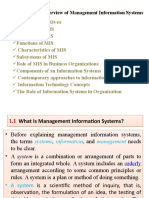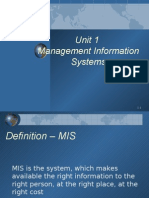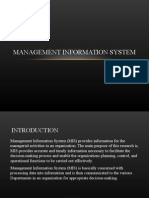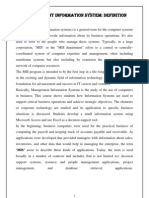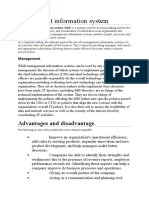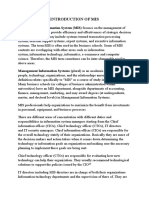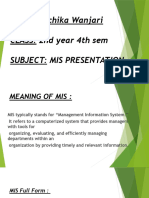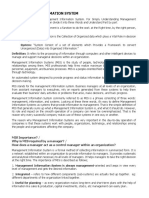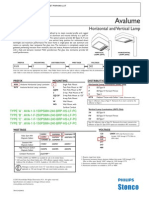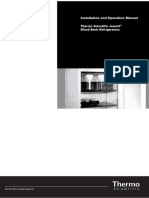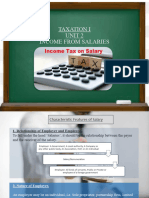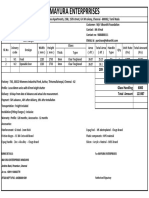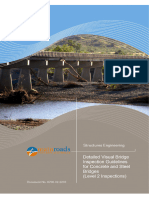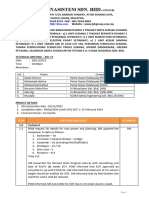0% found this document useful (0 votes)
36 views18 pagesMIS - Final Assignment
This document provides an overview of management information systems (MIS) and their evolution and importance for businesses. It discusses how MIS has transformed from early electronic data processing systems to today's enterprise-wide systems. The key benefits of MIS for organizations include improved productivity, greater data accuracy, more effective planning, and enhanced decision making. While MIS requires large initial investments and ongoing maintenance costs, the systems have helped businesses operate more efficiently and have been instrumental in their success. The overall purpose of MIS is to provide the right information to managers and other users at the right time to support business operations and decision making.
Uploaded by
yoshi kaCopyright
© © All Rights Reserved
We take content rights seriously. If you suspect this is your content, claim it here.
Available Formats
Download as DOCX, PDF, TXT or read online on Scribd
0% found this document useful (0 votes)
36 views18 pagesMIS - Final Assignment
This document provides an overview of management information systems (MIS) and their evolution and importance for businesses. It discusses how MIS has transformed from early electronic data processing systems to today's enterprise-wide systems. The key benefits of MIS for organizations include improved productivity, greater data accuracy, more effective planning, and enhanced decision making. While MIS requires large initial investments and ongoing maintenance costs, the systems have helped businesses operate more efficiently and have been instrumental in their success. The overall purpose of MIS is to provide the right information to managers and other users at the right time to support business operations and decision making.
Uploaded by
yoshi kaCopyright
© © All Rights Reserved
We take content rights seriously. If you suspect this is your content, claim it here.
Available Formats
Download as DOCX, PDF, TXT or read online on Scribd
/ 18





